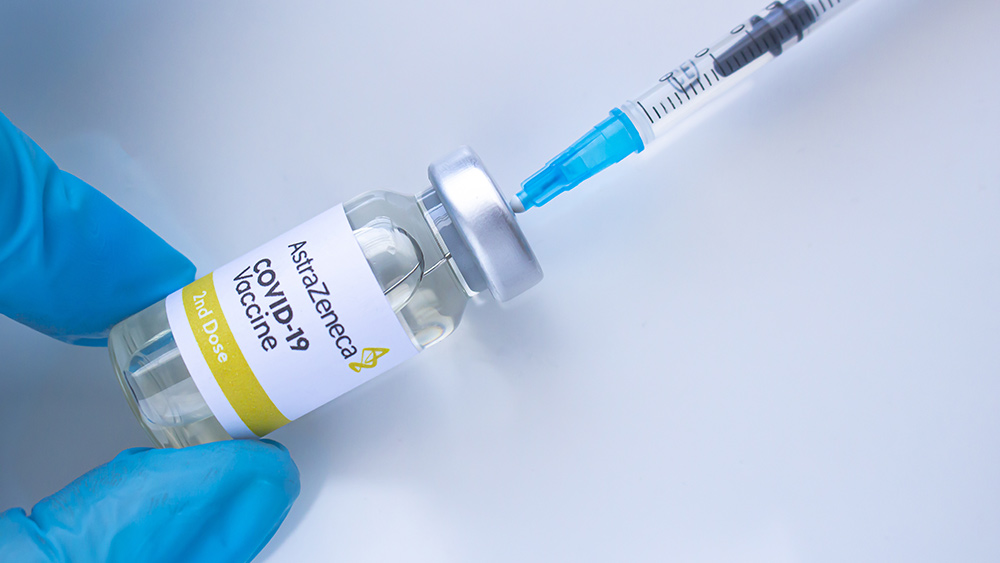WHO predicts 35+ million cancers by 2050, but ignores vaccine-induced TURBO CANCERS in those under 30 years old
05/09/2024 / By Ava Grace

The World Health Organization‘s (WHO) International Agency for Research on Cancer (IARC) predicts more than 35 million new cancer cases in 2050 – but conveniently ignores vaccine-induced turbo cancers among the young.
According to a report by the IARC, this estimate of more than 35 million new cancer cases in 2050 was based on the “best sources of data available in 185 countries in 2022.” That year, there were an estimated 20 million new cancer cases and 9.7 million deaths recorded. The 2025 estimate represents a 77 percent increase from the number recorded in 2022.
“About one in five people develop cancer in their lifetime,” the IARC said. “Approximately one in nine men and one in 12 women die from the disease.”
About two-thirds of the new cancer cases and deaths were caused by 10 types of cancer. Lung cancer was most common, followed by female breast cancer, colorectal cancer, prostate cancer and stomach cancer.
When broken down by sex, breast cancer was the most commonly diagnosed – and the leading cause of cancer death – among women. Lung cancer and colorectal cancer accounted for the second and third most diagnosed types and cause of most deaths among women.
Lung cancer was the most commonly diagnosed type of cancer among men, and was also the leading cause of deaths for that gender. Prostate and colorectal cancers were second and third most commonly diagnosed, while liver and colorectal cancer caused the second and third most cancer deaths.
The global health body’s agency blamed the rising cancer rates on an aging population. Tobacco, alcohol, obesity and exposure to air pollution were also cited as potential factors.
Moreover, the report also mentioned that nations with a high human development index (HDI) “are expected to experience the greatest absolute increase in incidence, with an additional 4.8 million new cases predicted in 2050 compared with 2022 estimates.”
But nations with low and medium HDI are set to see a “most striking” increase in cancers. Medium HDI countries will see a 99 percent increase, while low HDI nations will see a 142 percent rise. The IARC also mentioned that cancer mortality in both low- and medium-HDI countries is projected to almost double in 2050.
But what about the vaccine-induced turbo cancers?
Incidentally, the IARC’s report conveniently ignored the emergence of rapid-growing “turbo cancers” in people injected with at least one dose of the Wuhan coronavirus (COVID-19) vaccine. These “turbo cancers” – including exceedingly rare types – often develop in breast, colon, esophagus, kidney, liver, pancreas, bile duct, brain, lung and blood.
As noted by Canadian oncologist and cancer researcher Dr. William Makis, these cancers are showing up in young people, many under age 30, with no family history of cancer. They are also showing up in pregnant women and young children. (Related: Dr. Robert Malone warns Moderna’s COVID-19 vaccine may cause CANCER).
Equally odd is the fact that most are stage 3 or 4 by the time they’re diagnosed, with symptoms arising only days or weeks before. The cancers grow and spread so rapidly that many of these patients die before treatment can even begin. Most of them are also resistant to conventional treatment.
One case described by cardiologist Dr. Peter McCullough and his colleagues centered on a 56-year-old man who developed basaloid carcinoma – a type of aggressive cancer – after receiving the COVID-19 mRNA injection. Early symptoms, which began just four days after the jab, were similar to those caused by Bell’s palsy. Initially, this involved head pain – but soon a tumor developed on the man’s ear and face.
Another case published in Frontiers in Medicine centered on a 66-year-old man who experienced a “rapid progression” of angioimmunoblastic T-cell lymphoma (AITL) mere days after getting a third dose of the Pfizer COVID-19 injection. AITL, a rare type of non-Hodgkin lymphoma, primarily affects the lymph system.
The man ironically got the booster dose to protect him during chemotherapy, but this only triggered his cancer to explode and spread in eight days. Such a progression would normally take a couple of years or at least a few months, according to Makis.
Head over to CancerCauses.news for more stories about the COVID-19 injections and cancer.
Watch Neil Oliver explaining how the COVID-19 booster shots “set free” cancer cells.
This video is from the Tilt channel on Brighteon.com.
More related stories:
Sources include:
Submit a correction >>
Tagged Under:
cancer tumors, covid-19, harmful medicine, International Agency for Cancer Research, pandemic, turbo cancers, vaccine, vaccine damage, vaccine injury, vaccine wars, World Health Organization, Wuhan coronavirus
This article may contain statements that reflect the opinion of the author
RECENT NEWS & ARTICLES
PharmaceuticalFraud.com is a fact-based public education website published by Pharmaceutical Fraud Features, LLC.
All content copyright © 2018 by Pharmaceutical Fraud Features, LLC.
Contact Us with Tips or Corrections
All trademarks, registered trademarks and servicemarks mentioned on this site are the property of their respective owners.



















